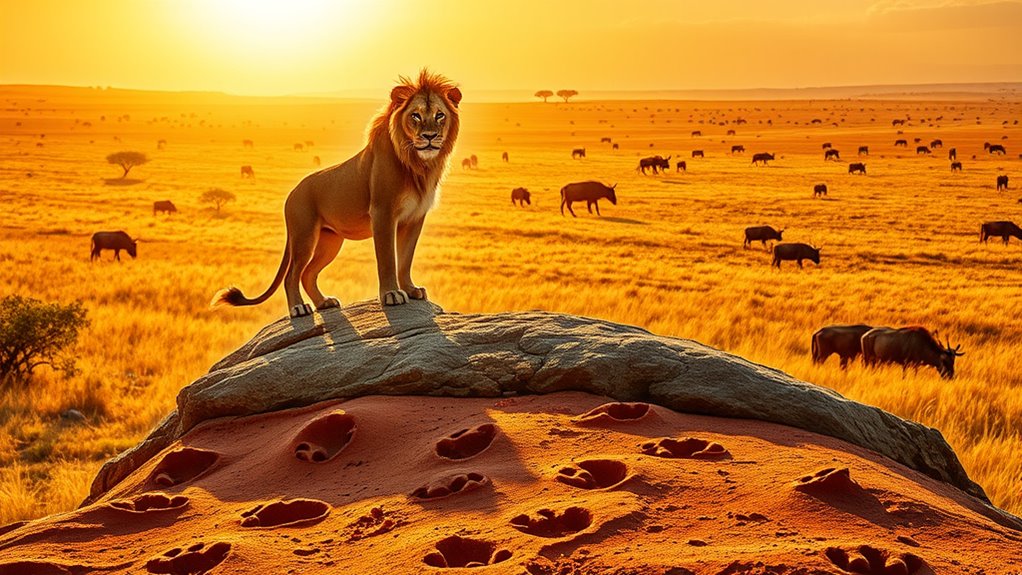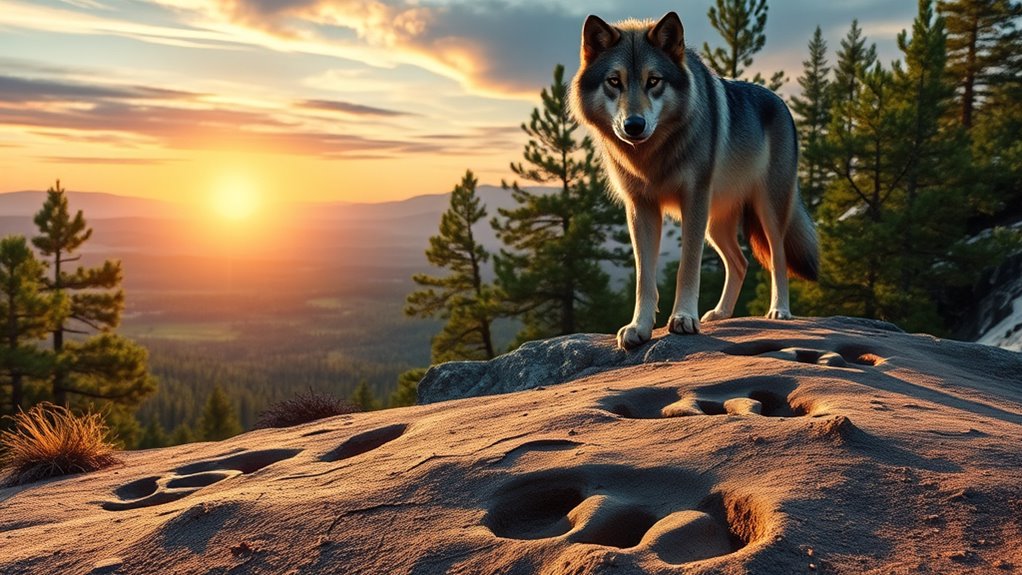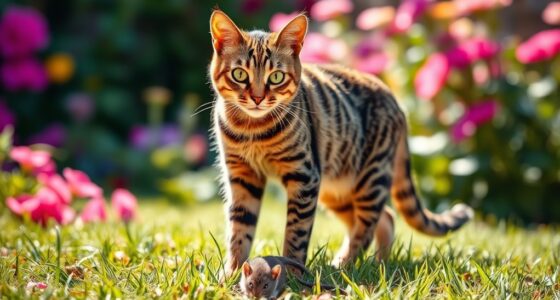Territoriality in animals is vital for their survival. It helps secure food, water, and shelter by establishing and defending specific areas. By doing this, animals prevent resource depletion and reduce competition with others. They also use various signals, like vocalizations or scent markings, to assert their presence without constant fighting, saving energy and minimizing risk. Understanding these behaviors reveals fascinating insights into how species adapt and manage their resources. Discover more about the nuances of this instinctive behavior.
Key Takeaways
- Territoriality allows animals to secure essential resources like food, water, and shelter within a defined space.
- Defending territories prevents resource depletion by deterring intruders and conserving energy for vital activities.
- Territorial behaviors, such as vocal signals and scent marking, communicate occupancy and reduce direct conflicts.
- Understanding and adjusting territorial boundaries based on resource availability fosters coexistence among overlapping territories.
- Territoriality enhances reproductive success by maintaining space integrity for breeding and nurturing young.

Territoriality in animals is a fascinating behavior that reveals how species establish and defend their space. When you observe animals in their natural habitats, you can often see the lengths they’ll go to in order to maintain their territories. This territorial defense isn’t just about marking a boundary; it’s a critical aspect of their survival strategy. By defending their space, animals ensure access to essential resources like food, water, and shelter. This makes understanding territoriality essential for appreciating how various species thrive and adapt.
Territoriality in animals showcases their instinct to defend vital resources, ensuring their survival and adaptation in diverse habitats.
You might wonder why animals are so keen on defending their territories. The answer lies in resource allocation. When an animal claims a territory, it’s not merely about having a place to roam; it’s about securing the resources within that area. For example, a male bird will sing loudly and display vibrant colors to warn others off, signaling that this territory is occupied. This display helps conserve energy because, instead of fighting off intruders, the bird can simply assert its presence. By doing so, it’s effectively allocating resources—time, energy, and food—towards ensuring its survival and reproductive success.
Territorial defense can take many forms, depending on the species. In some cases, you might see aggressive behaviors, like fighting or chasing off intruders. In others, animals may rely on more subtle cues. For instance, wolves will mark their territories with scent, letting others know that the area is claimed without requiring a confrontation. This kind of behavior not only conserves energy but also minimizes the risk of injury, which could have dire consequences for survival.
Moreover, territoriality can impact social structures within species. In certain environments, you’ll notice that animals learn to coexist, establishing a balance where territories overlap yet remain respected. This dynamic requires a keen understanding of resource allocation, as animals often adjust their territorial boundaries based on available resources. You might see deer altering their range during seasons of scarcity, demonstrating how flexible and adaptable territoriality can be. Celebrity relationships often highlight the complexities of personal space and boundaries, much like animal territoriality.
Frequently Asked Questions
How Do Animals Mark Their Territory?
Animals mark their territory using various methods to establish boundaries. You might notice them leaving scent marks, like urine or secretions, which signal their presence to others. Some animals scratch trees or dig in the ground to create visible signs of ownership. Vocalizations, like howls or calls, can also declare their territory. By employing these marking methods, they effectively communicate their boundaries to potential intruders, helping to maintain their space and reduce conflicts.
What Are the Consequences of Losing Territory?
Losing territory can feel like being kicked out of your own home. When you lose your space, you face increased stress and vulnerability. You struggle with territory defense, making you a target in territorial disputes. This loss can lead to reduced access to resources, affecting your survival and breeding success. The fight for what’s yours becomes tougher, and you might find yourself constantly on edge, maneuvering a world that feels increasingly hostile.
Can Territorial Behavior Change With Seasons?
Yes, territorial behavior can change with the seasons. As environmental influences shift, animals often adapt their territorial ranges to find food, shelter, or mates. For instance, during warmer months, you might notice seasonal territorial shifts as animals expand their territories for breeding. Conversely, in winter, they may contract their spaces to conserve energy and resources. These adaptations help them survive and thrive throughout changing conditions, illustrating the dynamic nature of animal behavior.
Do Animals Share Territory With Others?
Yes, animals do share territory with others. For example, you might observe a pack of wolves that maintains a cooperative territory, allowing them to hunt together. In contrast, territorial disputes can arise when another pack encroaches on their space. This balance between cooperation and conflict helps guarantee survival and resource availability. So, while some animals fiercely protect their territory, others can thrive by sharing it when it benefits the group.
How Does Human Activity Impact Animal Territories?
Human activity markedly impacts animal territories by causing habitat fragmentation and increasing human encroachment. When you build roads, cities, or farms, you divide natural habitats, making it hard for animals to find food, mates, or shelter. This disruption can lead to increased competition and stress among wildlife, pushing some species to adapt or relocate. Ultimately, your actions can threaten biodiversity and the balance of ecosystems, affecting both wildlife and human communities.
Conclusion
In the wild, space isn’t just a luxury—it’s a life-or-death drama! Every creature’s got its turf, fiercely defended like a royal castle. When you think about it, territory’s the ultimate game of thrones, where the stakes are sky-high and the battles are epic. So, next time you spot an animal marking its domain, remember: it’s not just claiming space; it’s declaring its very existence! In the grand theater of life, every inch matters, and oh, what a show it is!










